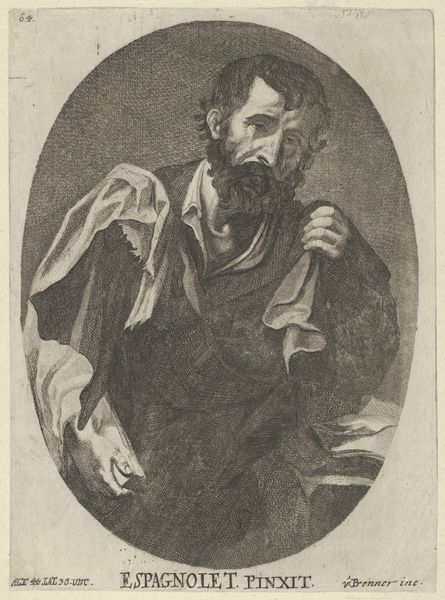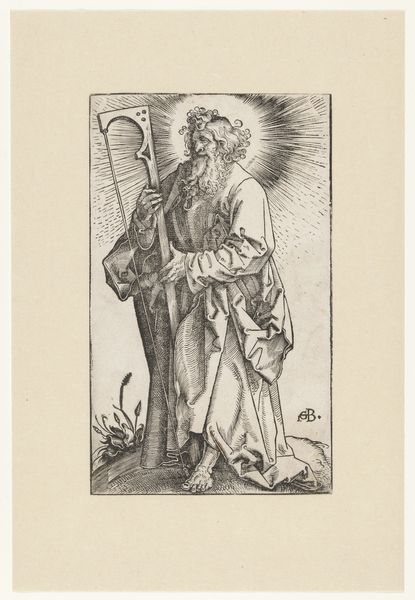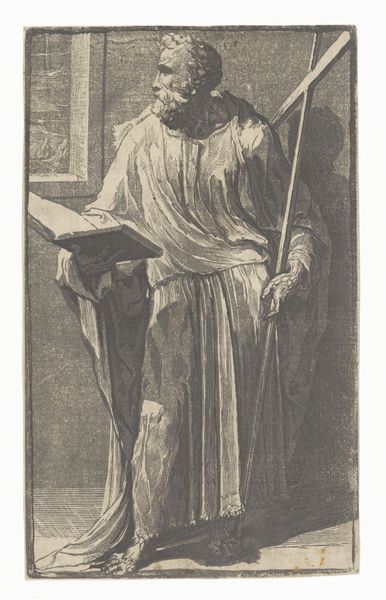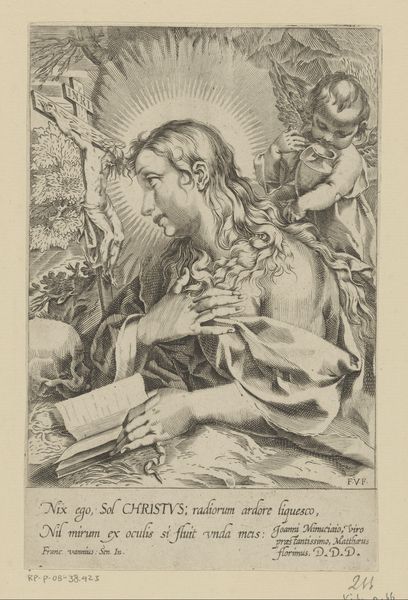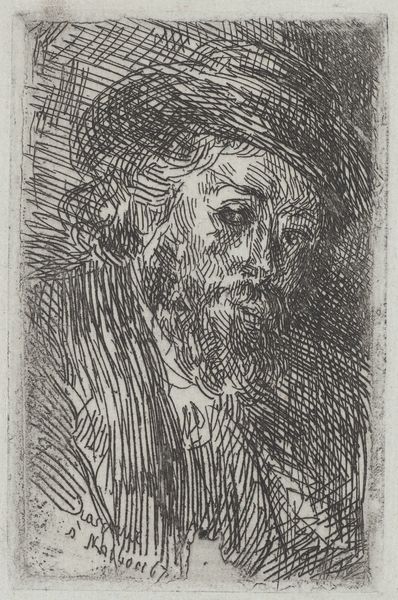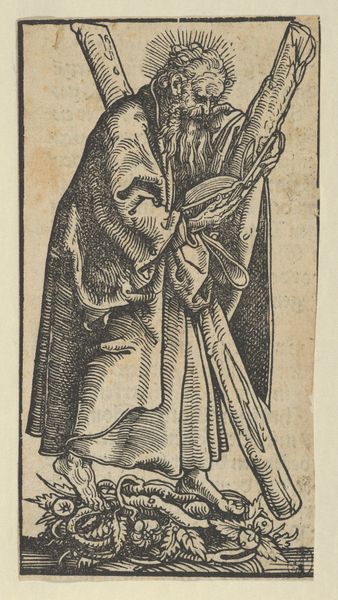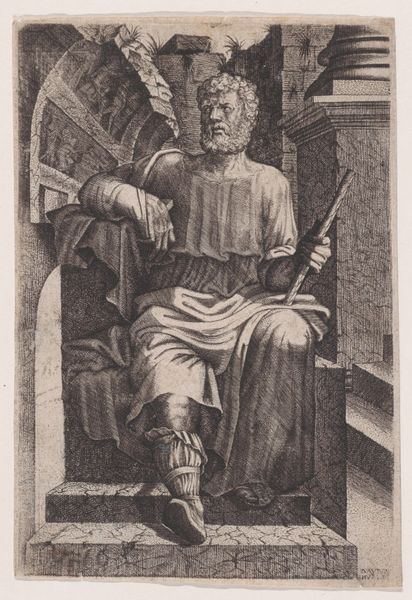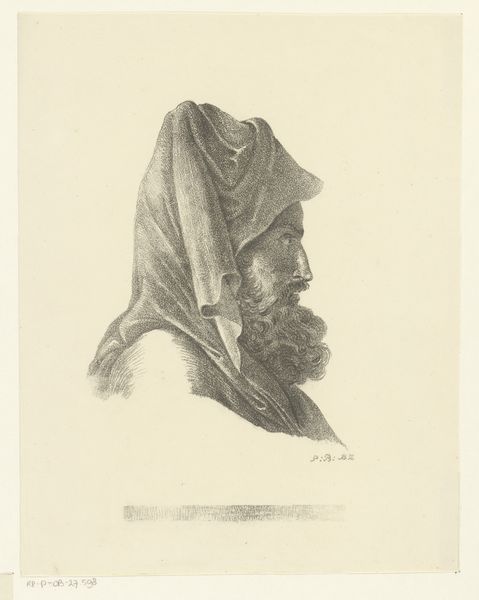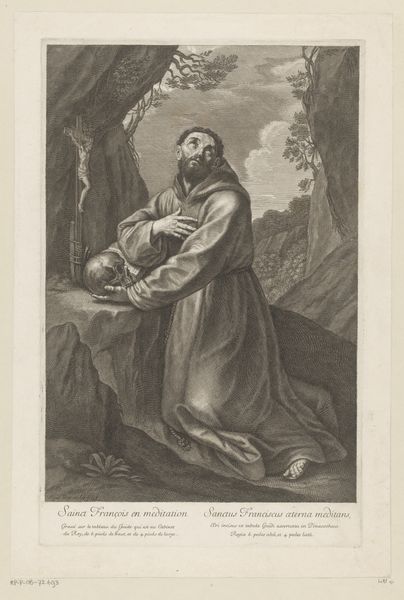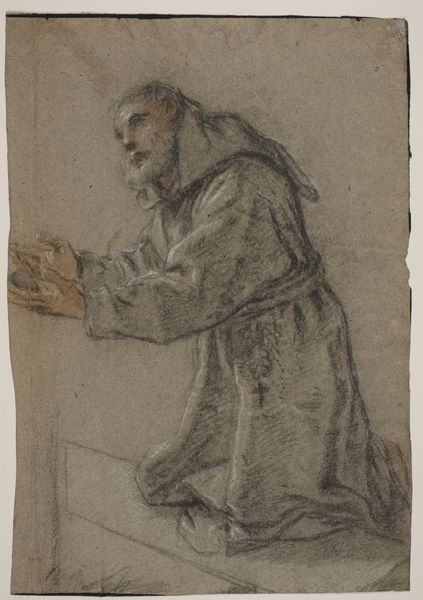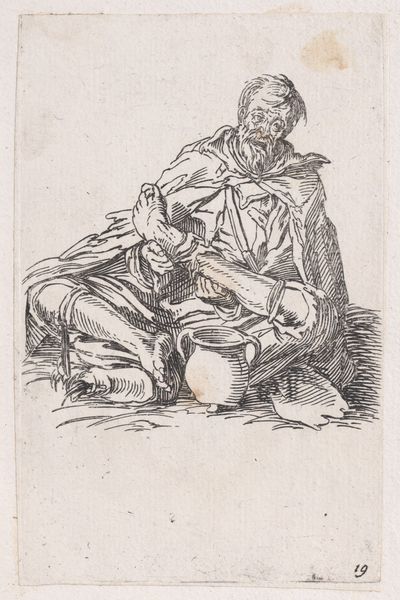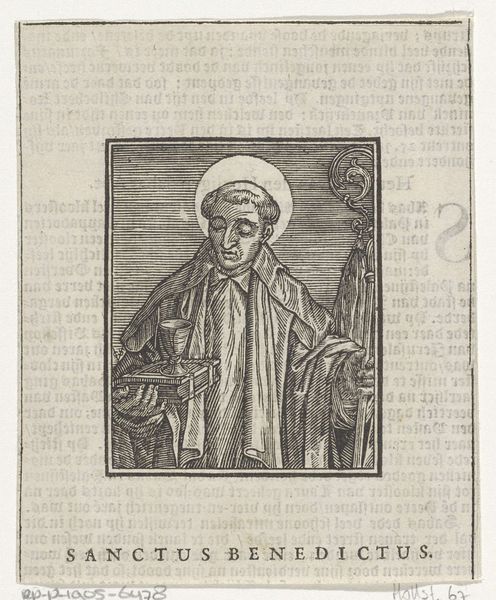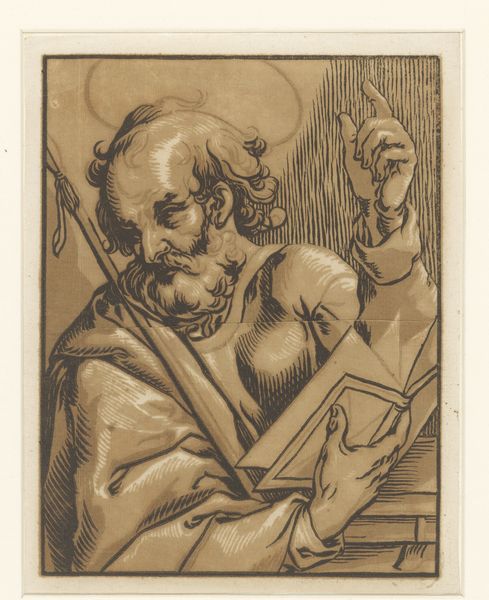
Portrait of Andreas Vesalius, half-length in profile standing in front of a table dissecting the arm of a body; frontispiece to Andreas Vesalius 'De humani corporis fabrica libri septem' 1542
drawing, print, engraving
portrait
drawing
figuration
11_renaissance
history-painting
academic-art
italian-renaissance
engraving
Dimensions Sheet: 8 3/8 × 5 11/16 in. (21.2 × 14.5 cm)
Curator: This engraving, crafted around 1542 by John of Calcar, offers us a fascinating glimpse into the world of Renaissance anatomy. The piece, residing at the Metropolitan Museum, is titled 'Portrait of Andreas Vesalius,' showing him dissecting an arm. It served as the frontispiece to Vesalius’ groundbreaking 'De humani corporis fabrica.' Editor: Gruesome, but impressive. The sheer detail in the exposed muscles and tendons is unsettling, yet mesmerizing. I immediately focus on the intricate lines suggesting depth and texture, the table’s cluttered surface indicating his process of anatomical exploration. Curator: Absolutely. It's worth considering that Vesalius challenged established Galenic anatomical theories prevalent at the time. This image represents a pivotal moment, a shift towards empirical observation and the study of the human body through dissection, altering medical and artistic understandings. It signified that knowledge could and should come from primary material—the body itself—and not merely from text. Editor: Right. You see the tools he uses. They point to the immediate engagement with the physical material of the human body. Engravings like this weren't just informative, but actively shaped how the process of understanding anatomy was made and perceived. Curator: Furthermore, this portrait emphasizes Vesalius’s role as a public figure, almost like a theatrical display. The composition elevates the status of the anatomist, presenting scientific exploration as a respectable, almost heroic endeavor. Think about the role of the printed image in circulating this idea and cementing Vesalius's place in history. Editor: Exactly. Consider the role of the printing press in democratizing such images. Making this advanced and once-forbidden knowledge more widely accessible. What about the lives impacted and changed by Vesalius' discoveries through this medium? It highlights how knowledge production can intersect with evolving artistic forms like the detailed engraving technique to promote revolutionary concepts. Curator: Ultimately, this engraving symbolizes a confluence of art and science, reflecting the transformative intellectual currents of the Renaissance. Editor: It makes you ponder how closely the development and innovations in artistry influenced, recorded, and bolstered the progress and study of hard sciences in history. An interesting way to consider materiality, making, and its cultural influence.
Comments
No comments
Be the first to comment and join the conversation on the ultimate creative platform.
